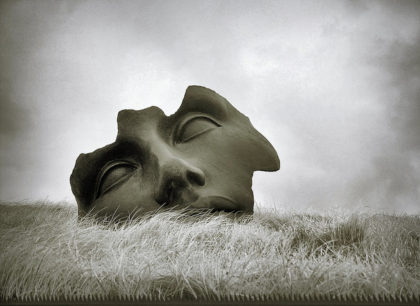Some of the best lessons in training are the ones you get when you least expect them.
Yesterday, while training with Sifu Vizzio, he hit me with a zinger. At the end of the session he said – without any context, apropos of nothing – “eventually, everybody’s mask comes off”.
I was caught way off-guard. I thought to myself, “Is my teacher telling me that I’m a fraud? That I’m wearing a mask? What’s he getting at?”
 It was a moment of deep uncertainty for me. I didn’t know what he meant, why he said it or what I was supposed to do with it.
It was a moment of deep uncertainty for me. I didn’t know what he meant, why he said it or what I was supposed to do with it.
Was he trying to say to me that I’ve been pretending, and I need to face reality? That he felt I was resisting something, not facing a weakness or a shortcoming?
Or was it a reminder – if you just trust the teacher and the training you can take off the armor and go where you don’t want to go?
For the rest of the day, I kept thinking about it. (It’s a sign, by the way, of a good training session – it had provoked so many questions in me that I was fired up looking for an answer.)
The more I reviewed it, the more frustrated I got. I didn’t have any solutions, and no more understanding than when he first said it.
When I woke up the next morning, I realized two things.
The first realization was about me. He’s right that – if I am honest with myself – I am a fraud. Like a lot of people, I do wear a mask. There is a lot of hypocrisy going on in my life, and probably in yours as well.
As martial artists, we need to address the masks we wear. We can take them off if we have the insight, but we could also just start by acknowledging that we wear them.
The second realization was about the process of training in the martial arts. The space in the training session is – should be – safe. It’s a place for us to unveil our vulnerability.
In other words, the one place we should be looking to take our masks off is on the dojo floor. And we should be encouraged by the climate of the class to do that. It might not be an easy place to do it, but it needs to be a safe place.
This is something for everyone to look at, especially instructors. “Safe” goes way beyond learning to physically battle an attacker. The dojo practice has to be safe in a way where students can be vulnerable, because we need to drop our armor and our baggage if we want to progress.
If the space isn’t safe, we can’t ever take a serious look at ourselves, and we can’t ever open up for good instruction.
Let’s acknowledge that this opening, “dropping the mask”, is tough. Many people collapse because of it, right at the “mid-life” point. They have a crisis and lose their center, then they try to build it back up without really excavating what caused their collapse to begin with.
From a martial arts perspective, we have to constantly become vulnerable. We need to revisit and review who we are and what we do. We can’t hide from ourselves, or disappear into the martial arts.
For my own part, I don’t often want to look at the fact that I’m 47 years old and I can’t do the things that I used to do twenty five years ago. His instruction was for me to try to drop the “mask” that I’m still 22.
The dojo learning process is this way: we have got to open up and find a way through the difficulty and ridicule if we want to pursue the path to a better life.
The catch is…there’s progress on the other side of vulnerability only if we have the support of the community. That means instructors and students alike.
Eventually everybody’s mask is going to come off. Who we are will be visible to the world. And in the right dojo environment, we get two rare chances: first, to recognize that we might be hiding from ourselves, and then to safely work to prepare to face who we truly are.
Follow Shihan Gene Dunn on twitter @ShihanDunn
For more about our larger project of cooperative Jiu-Jitsu and martial arts training, visit the Brooklyn Brazilian Jiu-Jitsu (Brooklyn BJJ) website here.
Please help us share this post!